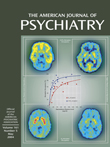To the Editor: Dr. Reich raises some of the key questions that face the field of personality disorders, all of which may certainly benefit from more extensive discussion. Here we add some further thoughts on these issues in the spirit of extending such discussion.
It is true that semistructured interviews for DSM personality disorders do not agree well with each other, and it would be difficult to defend such interviews as gold standards for the diagnosis of personality disorders. However, this may be less the fault of the interviews themselves than the definitions of personality disorders that they set out to assess. The observation has frequently been made that the criteria sets include a mixture of behaviors, feelings, attitudes, and traits, with wide variability in complexity and level of inference
(1). The limitations of assessment are likely to continue until the conceptualization and definition of personality disorders improve. As we commented in our article, clarifying the constructs that are presumed to underlie the observed manifestations (e.g., traits, dimensions, and genotypes) would allow more precise and, most likely, more reliable and valid assessments.
The influence of “state” on personality assessment is an important consideration. Here it is worth distinguishing between two meanings that have been ascribed to the axis I confound issue. One refers to a negative distortion in the individual’s perception and report of his or her usual self. This inflated report of lifetime psychopathology would result in a “false positive” personality disorder diagnosis. The influence of depressed mood on reports of personality disorders has been demonstrated on self-report measures, although the impact when semistructured interviews are used is less clear
(2). A separate issue concerns mistaking a chronic axis I disorder as a personality disorder; hence, what appears to be a personality disorder “remission” is really remission of an axis I disorder. It is important here to not let our biases dictate our conclusions (if a “remission” occurs, must it be axis I?). Another explanation is that the domain of psychopathology that our current system divides into axis I and axis II disorders may include dimensions that underlie both
(3).
If personality disorders were defined in terms of maladaptive traits, perhaps fluctuation over time in the manifestations of those traits would not be a surprise. That is, traits represent propensities to respond, feel, think, or behave in certain habitual ways. Individuals exhibiting a given trait may have differing amounts of such “propensities” or varying thresholds for manifesting the kinds of behaviors that define the trait. Those with low thresholds will appear more stably “personality disordered,” while those with relatively higher thresholds may show fewer or more intermittent manifestations, appearing less “stable.” Thus, perhaps rather than two disorders (lasting and “stress-induced/state”), as Dr. Reich proposes, the difference may be more of degree. The latter is consistent with our findings and others’
(4) of high correlations of a number of criteria for each personality disorder across assessments points, despite a significant decrease in the mean level of criteria present.
Finally, we agree that it is likely that some of our findings are due to the influence of treatment (psychosocial and pharmacological). This influence is very difficult to estimate in a naturalistic study like the Collaborative Longitudinal Personality Disorders Study since the more severely ill patients tend to receive more treatment, resulting in a negative association between receiving treatment and doing well. Nonetheless, information regarding the range of outcomes for individuals with personality disorders in clinical study groups, receiving the types of treatments currently available, addresses a clinically relevant question that is important to clinicians and policy makers.

